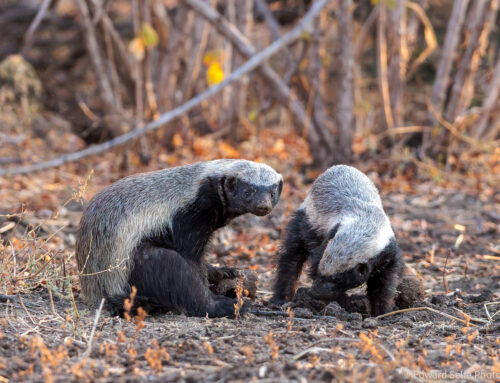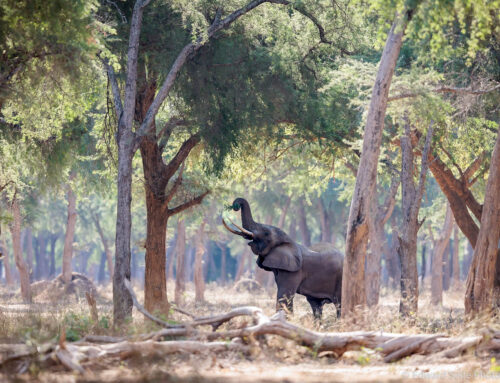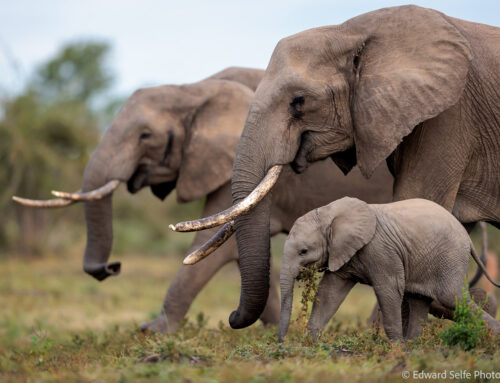It’s always a pleasure to have a repeat visitor on safari; not only is it great that someone enjoyed South Luangwa so much that they wish to return, but it’s fun to pick up where you left off and continue exploring different areas and new photographic techniques! I welcomed Mike White – from the UK – back to Luangwa last week, where we stayed in two camps in different parts of the National Park.
Mike is certainly not someone who comes with a list of demands, but he did ask to spend more time on some aspects of his photographic journey. Particularly, having seen my image of an Elephant in the Leadwood Forest, he wanted to do more animal-scapes (have a read of my blog entry on composition). He was also keen to do some shots of the night sky, some panning blur shots and finally lots of work on backlighting. I will be uploading Mike’s trip report in the next few days and you’ll see that his efforts were well rewarded.
This may sound like quite a complex brief, but actually it was a joy to work towards these goals, using whatever sightings the bush threw at us. Starting off in the central area of the South Luangwa NP, we began our first morning drive with the kind of sunrise that only Luangwa can deliver…
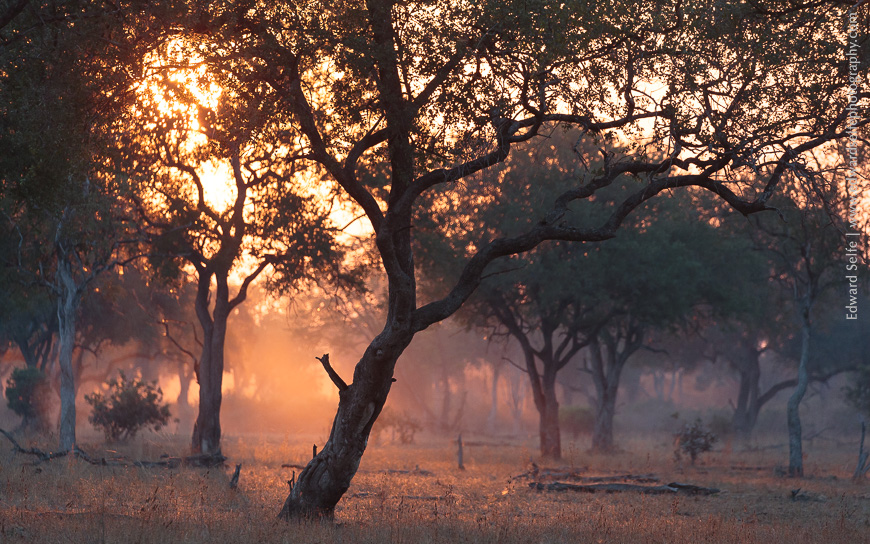
We moved on from this to investigate a nearby commotion and discovered a young male leopard who was finishing feeding on the carcass of a juvenile baboon which he’d killed the night before. This was a pretty exciting start for morning 1 on safari and set the tone for the rest of the trip! Not all leopards are skilled at hunting primates, not least because baboons are co-operative and have sharp teeth and opposable thumbs. However, some leopards have learned to rush at the base of a tree and watch for a few (unwise) baboons who drop to the ground in search of a safer tree….at least one of these careless few won’t be quick enough and end up being removed from the gene pool!
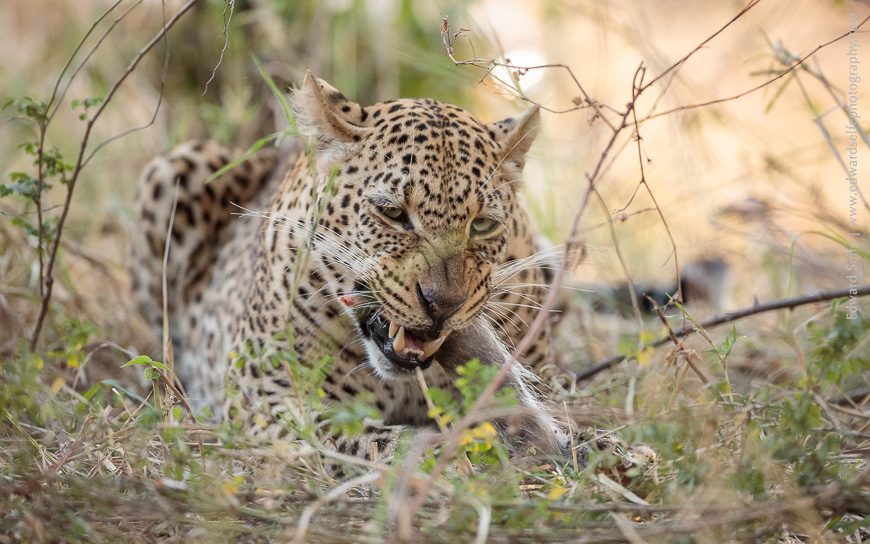
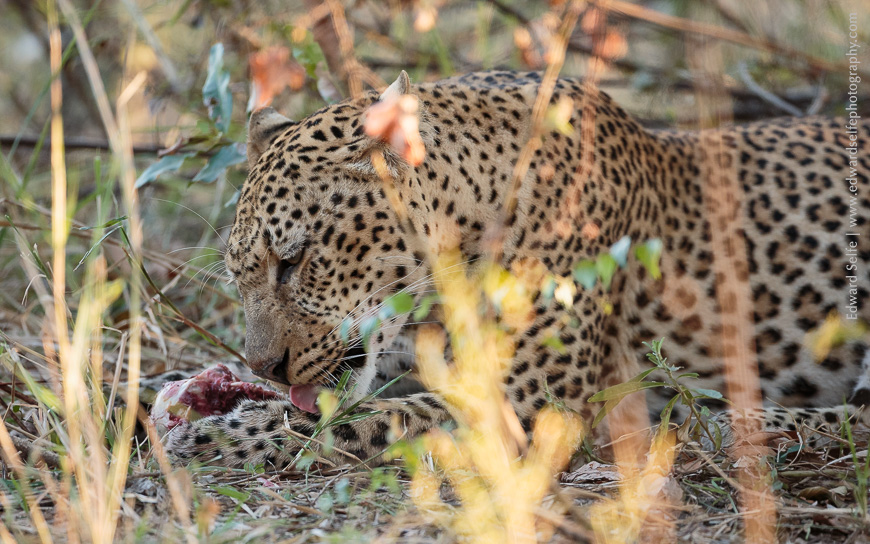
Following this, sightings arrived thick and fast; we spent half an hour at a small lagoon where an algal bloom has developed following the removal of all the water cabbage by the hungry hippos. The matt green surface gave a welcome relief from the normal bright water surface which contrasts heavily with the hippos’ dark skin.
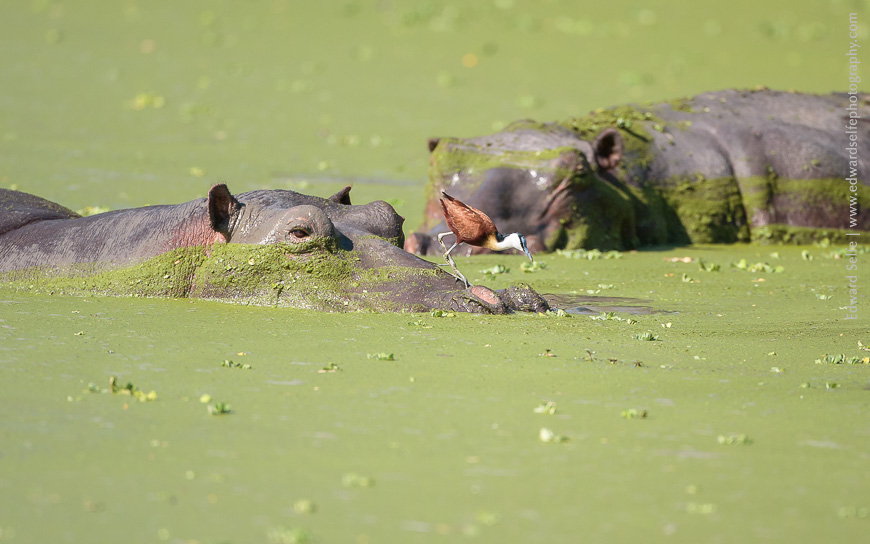
The second morning gave us our first chance at back-lighting. A moving herd of buffalo were startled by a passing vehicle and kicked up vast amounts of dust. Rather than moving through – as many guides would do – our photographic eyes sought interesting ways to use the opportunity. Initially, the trees were good subjects but later, a lone impala crossing the dirt track provided perspective and focal interest.
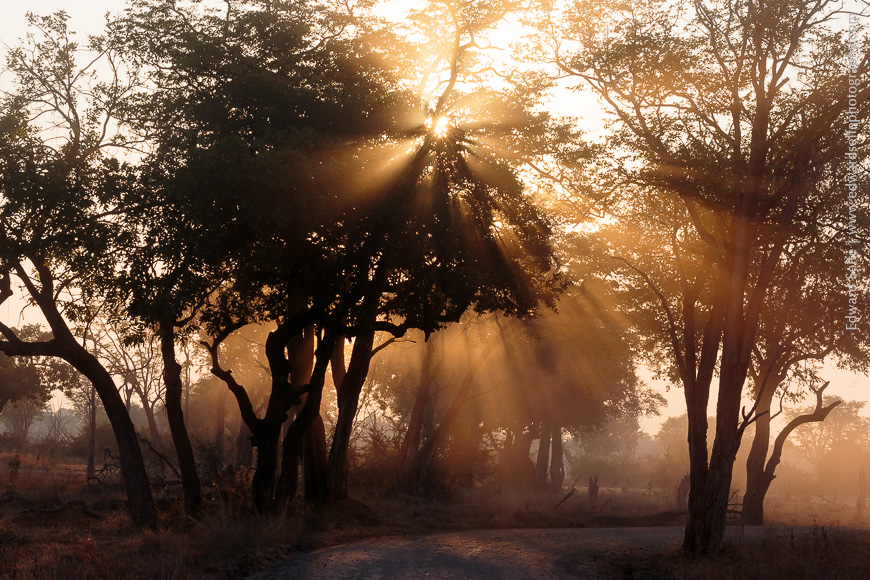
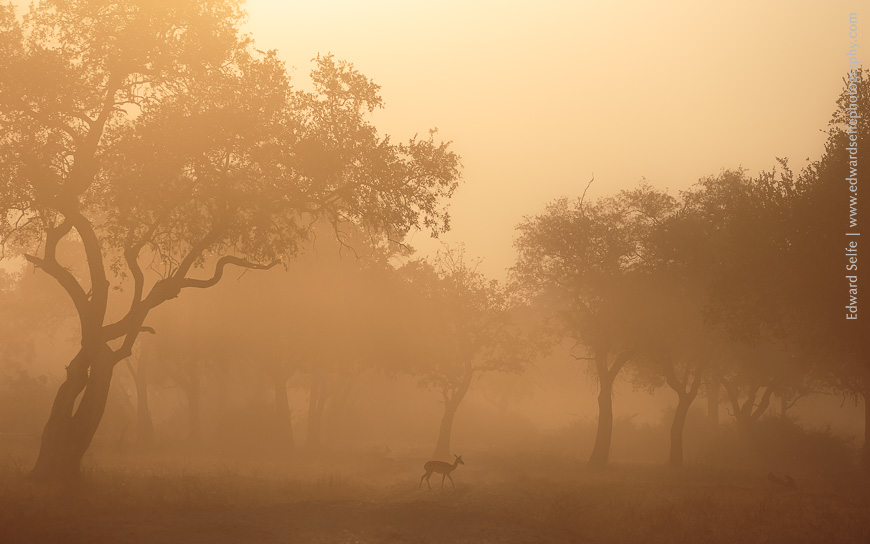
In pursuing animal-scapes, we kept an eye for subjects in the distance, hoping to place them among Luangwa’s majestic trees, or against one of this area’s distinctive skies. The great bonus for photos such as this is that it doesn’t matter what the subject is, but more the setting and the light. In this way, we built up a good number of stunning scenes, often involving the beautiful trees that surround the South Luangwa NP’s many lagoons. Strangely the best option on that morning was a small baboon on a termite mound, who momentarily glanced back at us.
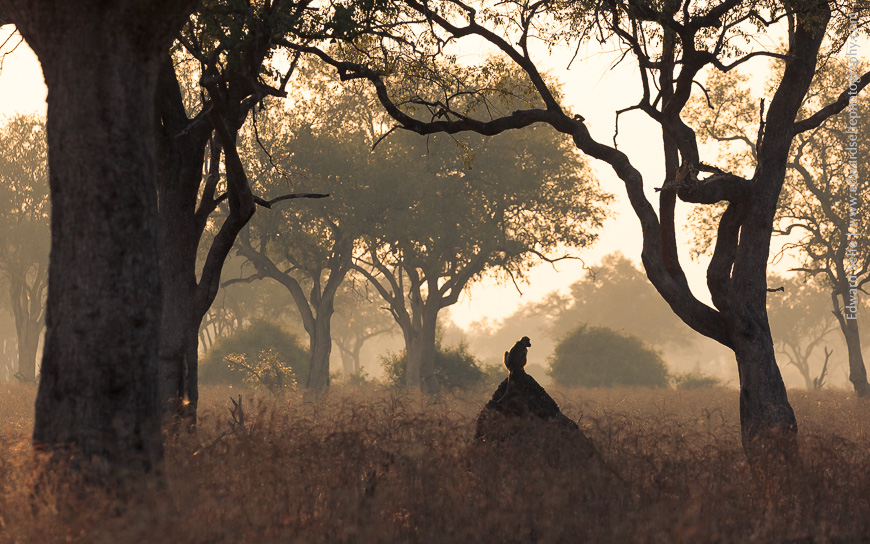
Moving on from the central area, we arrived at Zikomo Safaris on the edge of the Nsefu Sector. This area had given us some interesting and exciting experiences in 2016 so we hoped that this would be matched (could we hope for bettered?). Our first afternoon gave us a female leopard who stayed deep in the thickets suggesting to me that she was keeping cubs nearby and didn’t want to be disturbed. Even so, we were happy to get a couple of environment shots of her….little did we know what was to come later in the week!
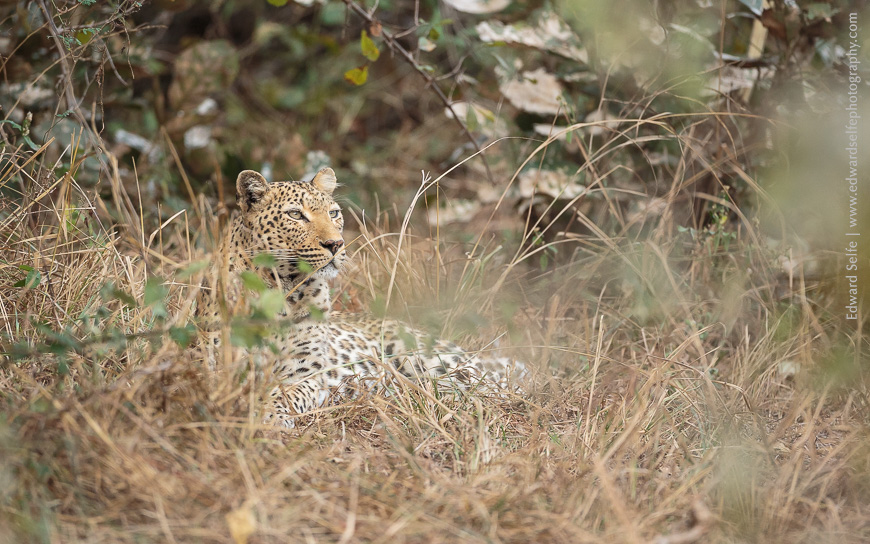
Setting out before dawn on day 4, we lined up some giraffes against the sunrise, and chose to zoom back to include the environment rather than creating the well-known silhouette shots made famous in the Mara. This technique is harder as there are more elements to compose – trees, sun, subjects, angle or view, focal length – but the rewards are much greater when it works.
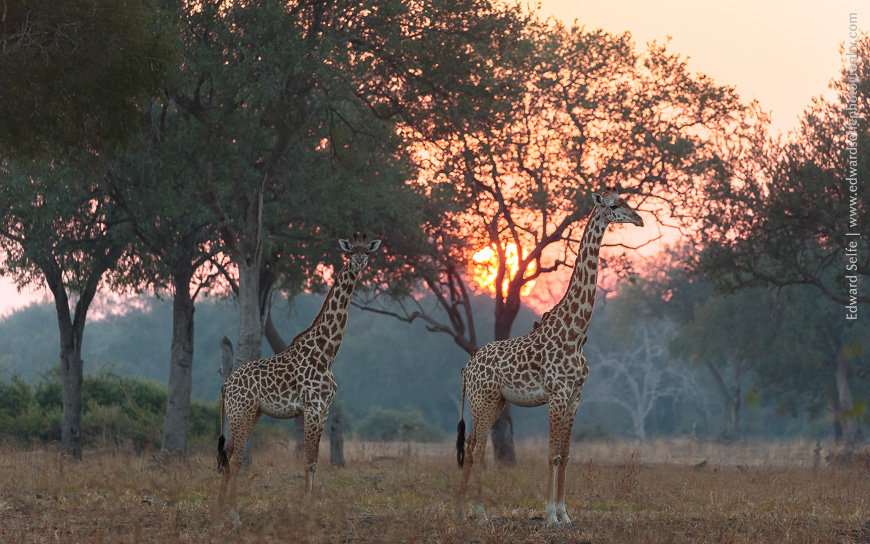
After a quiet couple of hours – these things happen when you visit the wilderness – I decided to investigate a lone Hooded Vulture who was, unusually, sitting in the top of a leafy tree. Most Vultures and large raptors will choose bare trees for roosting to enjoy the early rays of sunshine in the morning. This suggested to me that perhaps the scavenger was there for another reason. Indeed, we found a very well-fed sub-adult male lion who called loudly and then meandered between the large bushes. Nearby, a hyaena sat daintily waiting for the remains of the carcass.
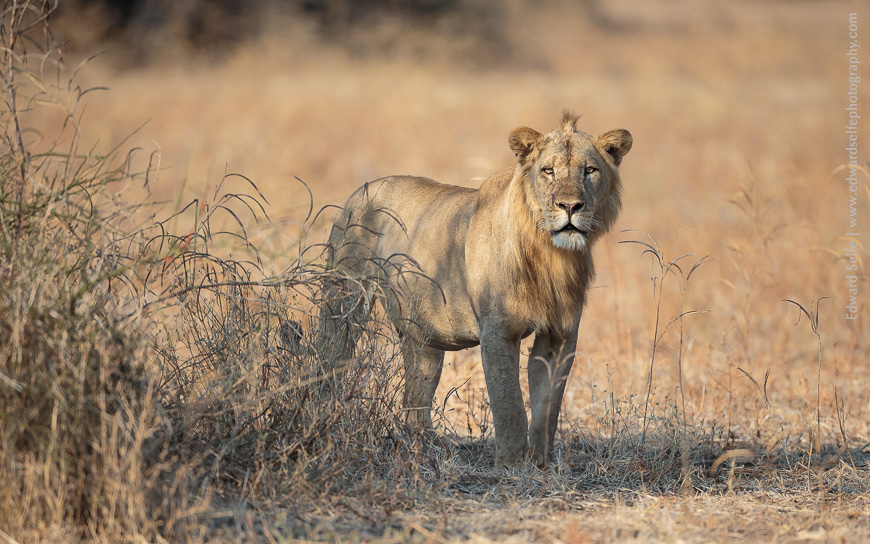
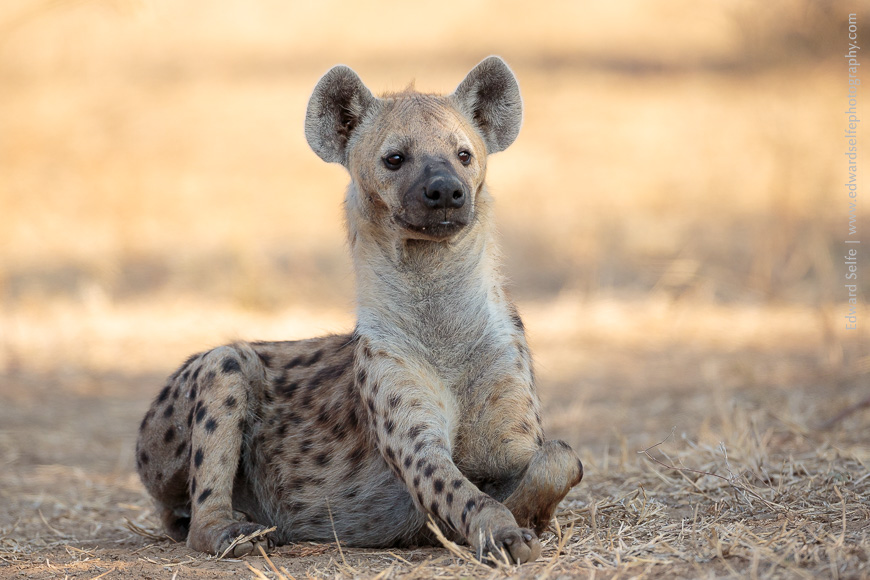
Very pleased with the morning’s sightings, we set out for camp. While rounding one of the big lagoons, I spotted a distinctive shape under a shady bush. Hardly daring to believe it, as it was after 10.00 and getting hot, I approached carefully to reveal a young leopard who was still on the hunt! Assuming she might have cubs, which would explain her hunger and daytime hunting, we kept back to allow her to approach us. She seemed completely oblivious to use and used a drainage gully to stalk some nearby impalas, finally sneaking right past the vehicle on her way to ambushing them. They got away, but not before she had crept up to within 8 meters and dashed around the bush attempting to snag one of them!
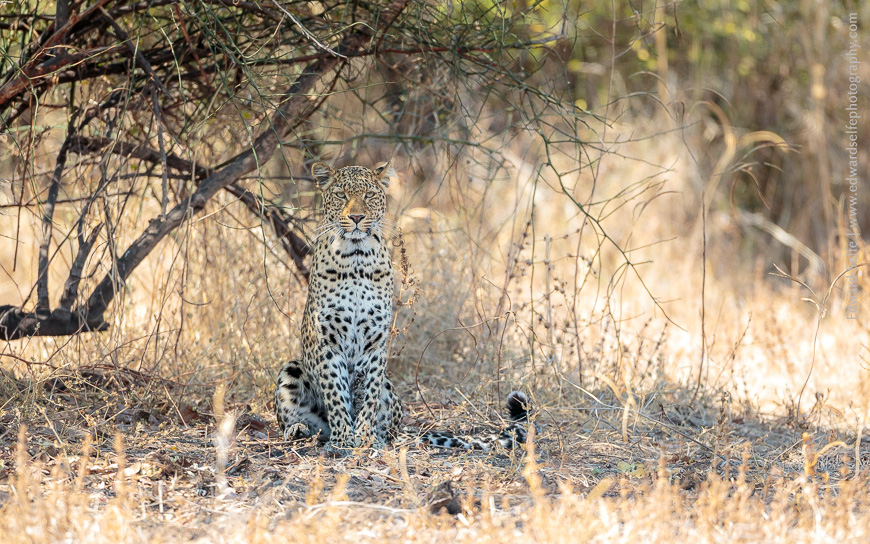
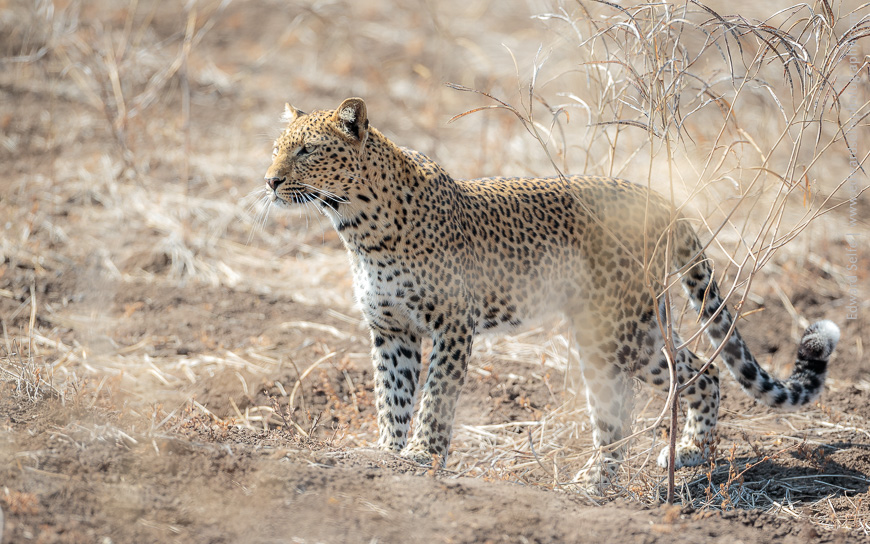
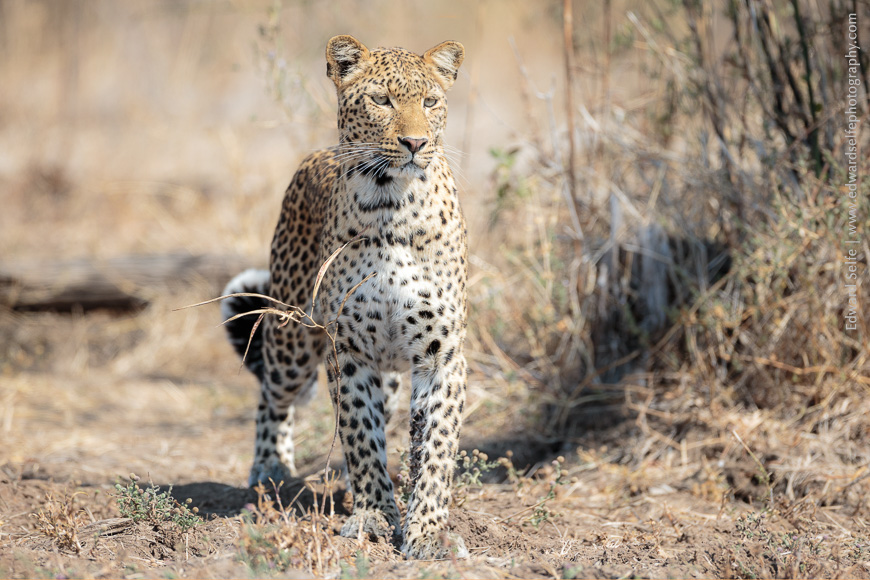
At half-way through the trip, we wondered what else Luangwa could offer us, but we returned to Mike’s wish-list and started applying some of the techniques that he wanted to perfect. Heading to the plains in the afternoon, we found a big herd of impala. Approaching them a little closer than normal, the stragglers at the back rushed to catch up with the main herd, running across our path. Using a shutter speed of around 1/50sec (achieved with a low ISO and/or small aperture) and panning with the movement gave us some very pleasing results.
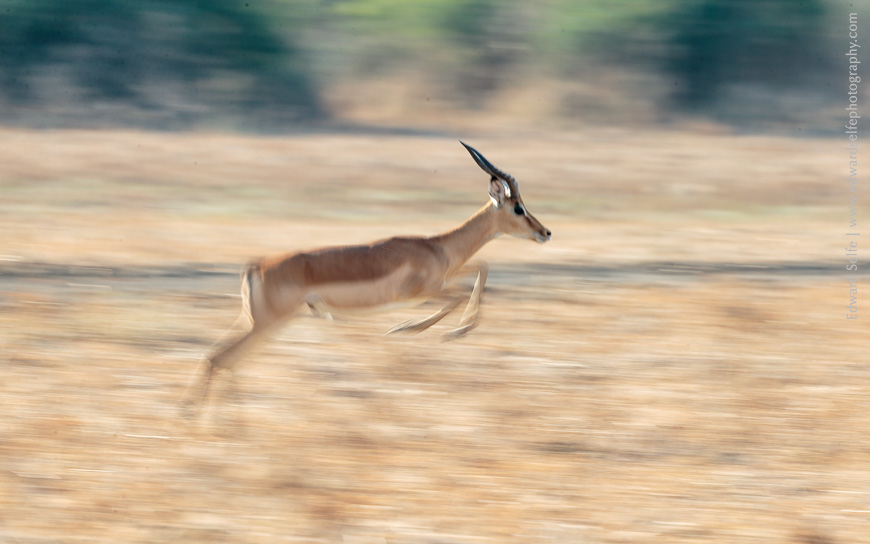
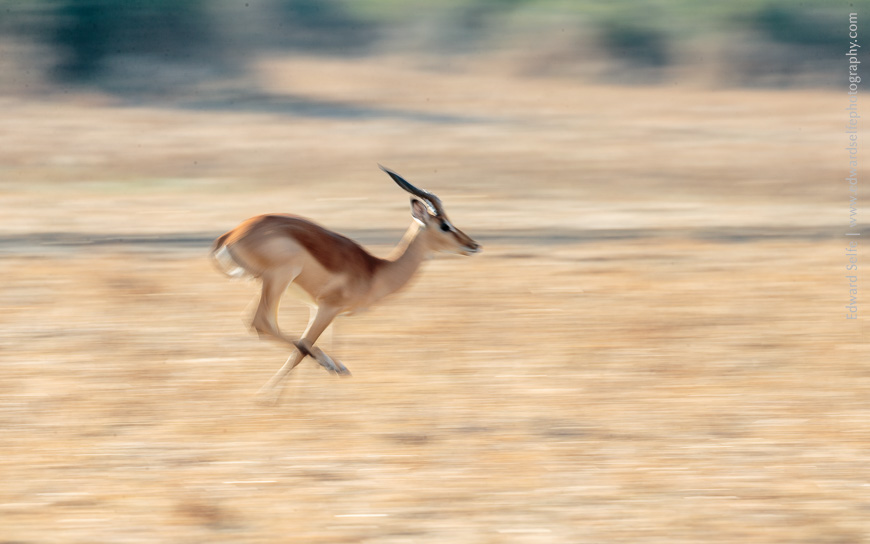
There was also time that afternoon to visit one of the Luangwa’s beautiful Ebony groves where a small herd of giraffes were passing through. The vastness of these hardwood trees dwarfs even stately giraffes and offers a new angle on the many photos taken of these well-loved African icons.
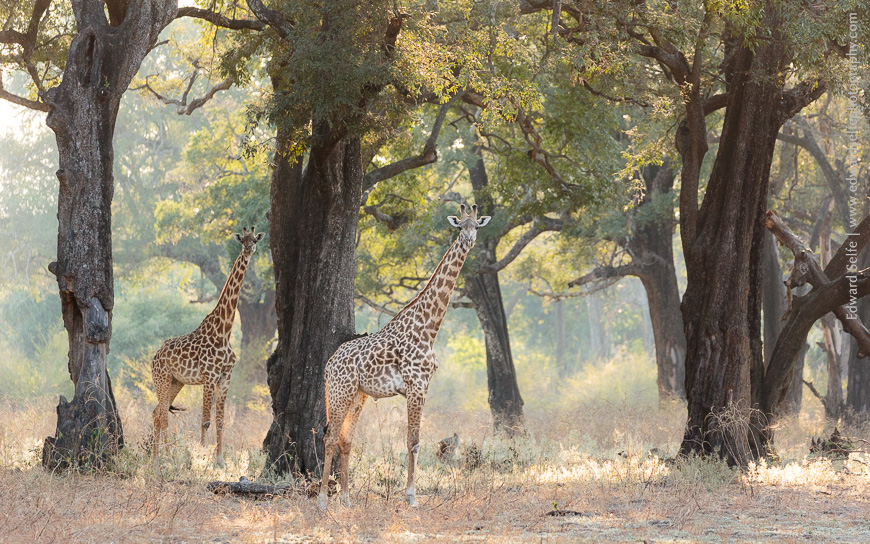
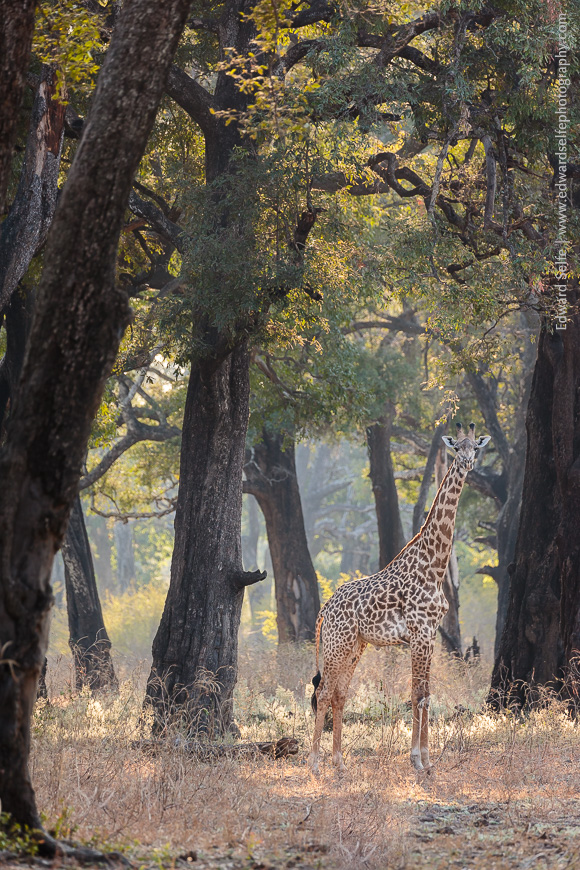
The munga woodland (open grassland with dispersed trees) around the lagoons offers great composition options at any time of the day, but especially at sunset and just afterwards when the light is very soft. Elephants crossing these open areas on their way from daytime to nighttime feeding zones are ideal subjects; they tend to wander quietly until darkness falls when they leave the park for more remote areas.
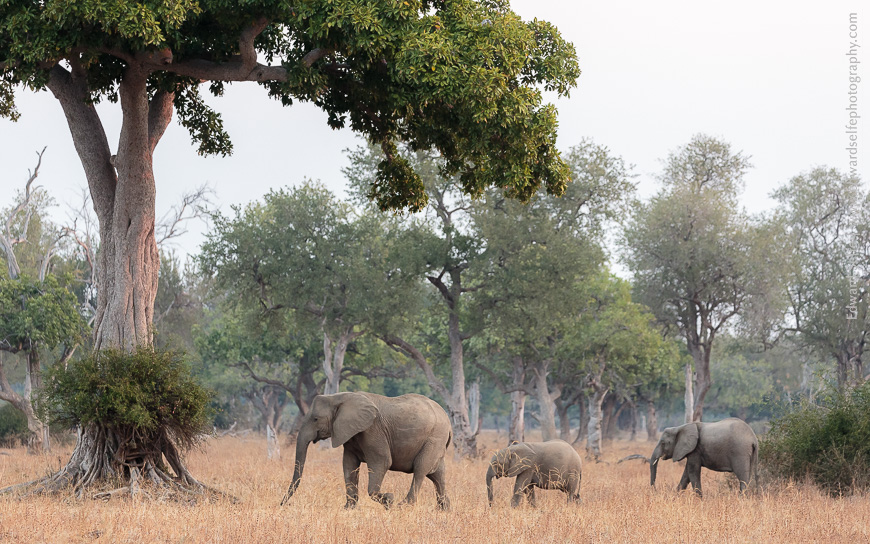
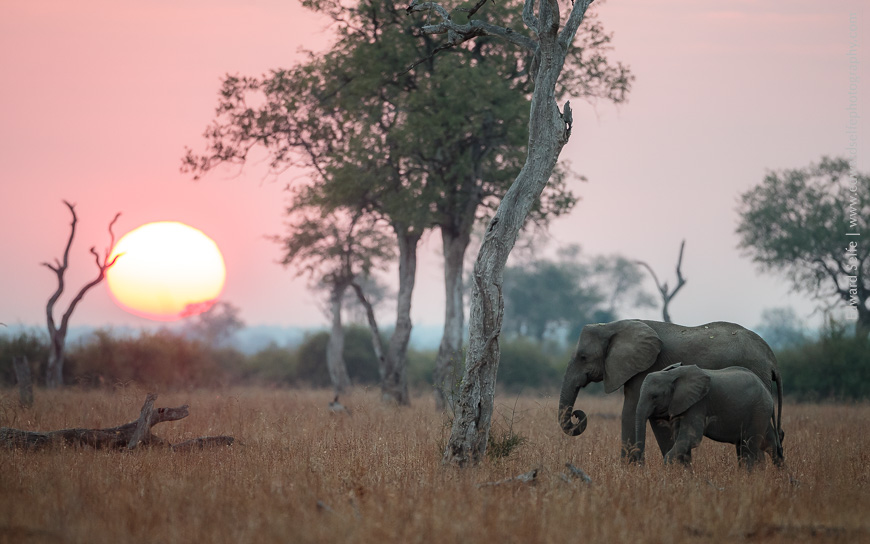
The following day gave us a dramatic encounter between two large male hippos in Kasikizi Lagoon; the larger male was draped with water weed, and he decided to approach the other male in “his” lagoon and challenge his right to be there. The smaller hippo retreated, but only as far as a nearby bush from where he defended himself with throaty bellows and submissive lip smacking. There followed a standoff as both males yawned (to show their teeth) and approached each other. Not surprisingly, neither was keen to attack since they were well-matched, and eventually, the larger male returned to the lagoon! Since the second male was hidden in the bush, it didn’t make for the best photographs, but it’s so easy to get caught up in exciting encounters such as this, that simply watching is often more than enough!

The soft light from thin cloud meant we could keep taking photos late into the morning that day, so we spent some time dwarfing elephants in the vastness of Lunga lagoon. There is much to be gained by photographing animals in their environments rather than just taking portraits, although they are often beautiful too.
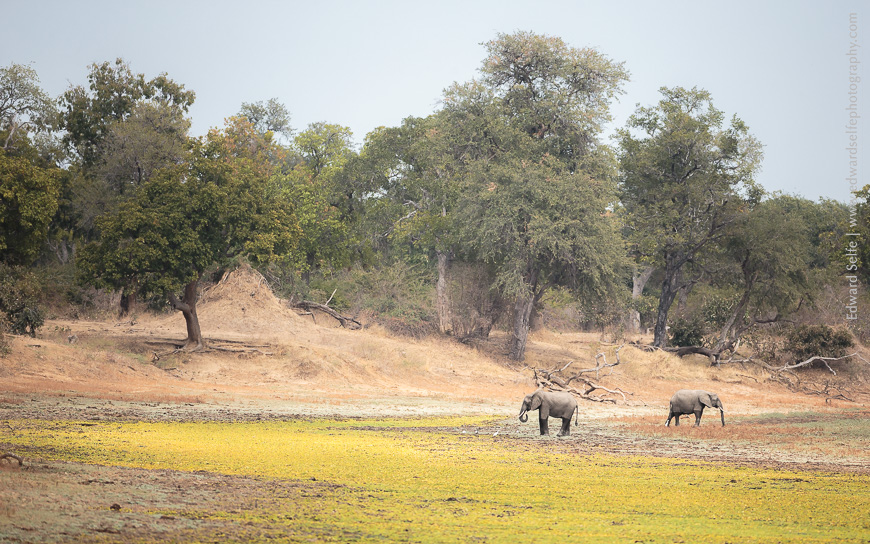
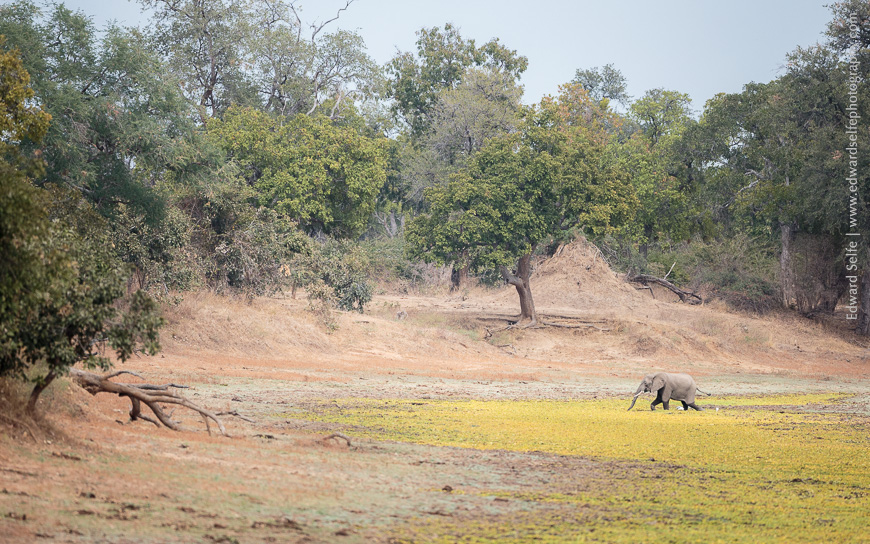
The afternoon session was a surprise as we had no real plan, so decided to explore some areas that we hadn’t been to before. This gave us some stunning scenery in a wooded lagoon, followed by a dramatic and dusty encounter with some buffalo crossing a drying channel. Mike’s photos – which will appear in his report soon – are outstanding, so I will leave this unfinished for now!
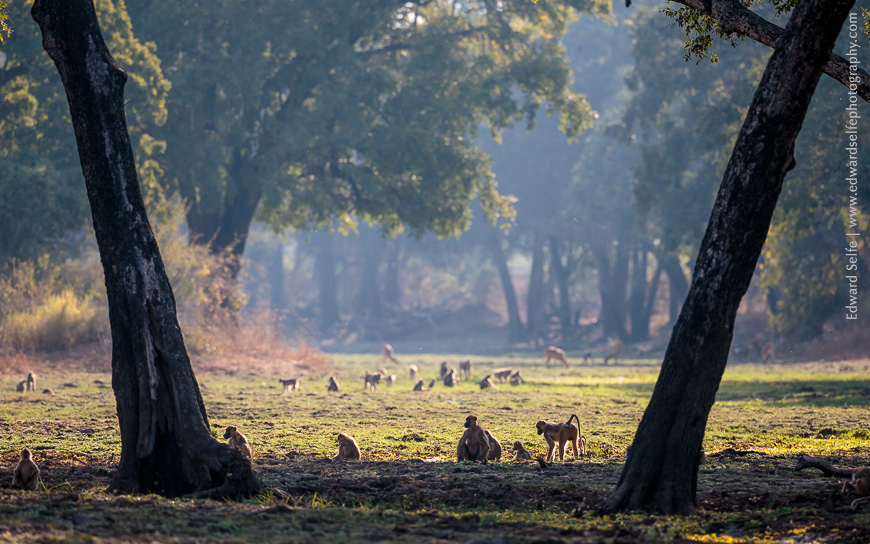
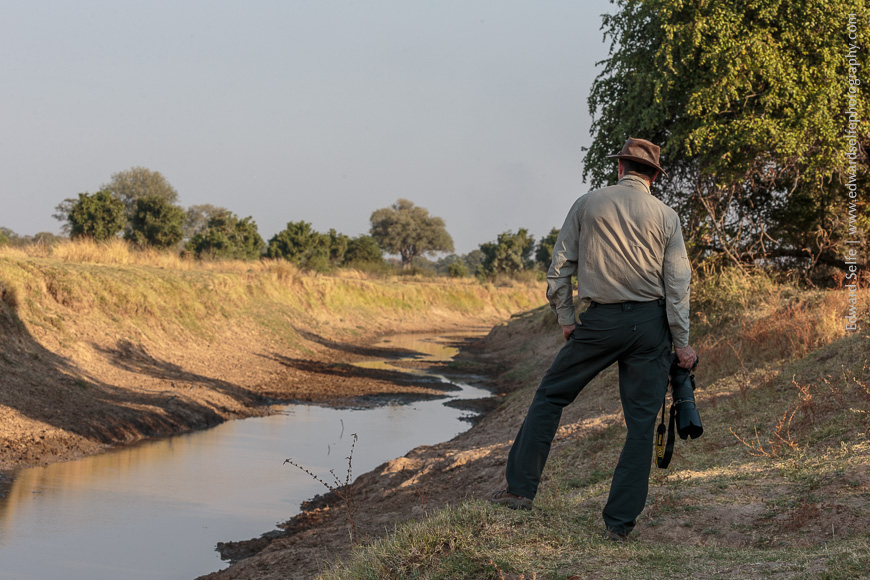
Our last evening finished off with a lone bull elephant crossing the drying channel of the Luangwa, and some snorting and honking hippos at sunset.
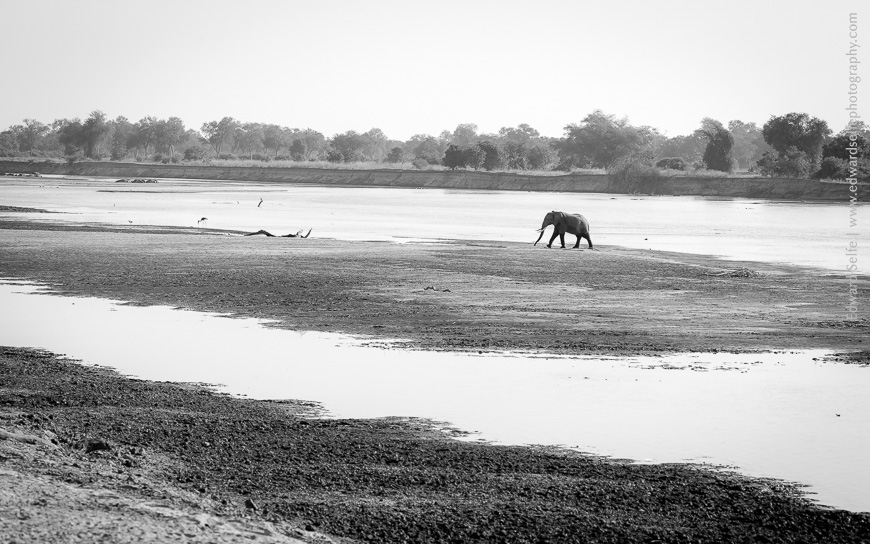
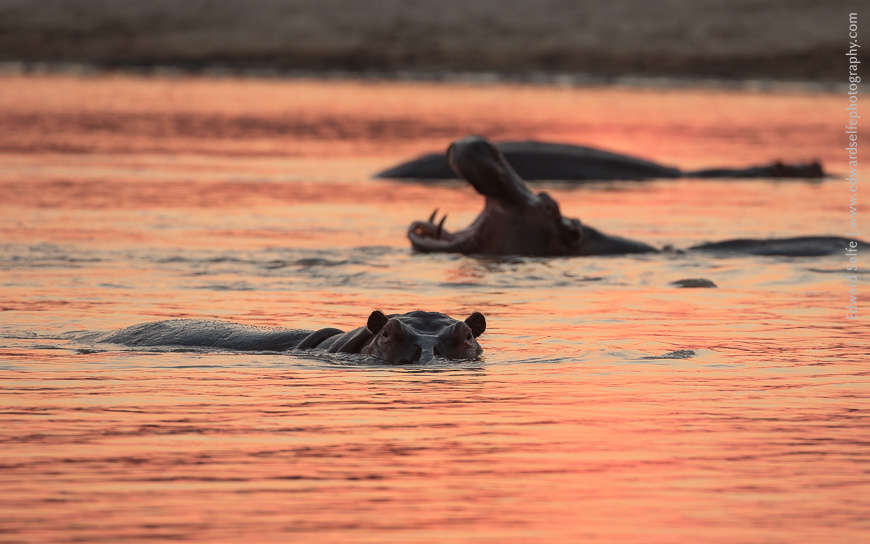
After a week of great sightings – giraffes in the ebony groves, a gorgeous young male lion, elephants at sunrise and a great leopard hunt – it was with some nervousness that we set out on the last morning. No one wants to end on a quiet drive – and such things can happen in the wilds, though rarely in Luangwa!
I needn’t have worried! Luangwa had a final salvo of varied and interesting sightings for us. We began with a pair of honey badgers (Mike’s photos to follow on his report) and thereafter moved to a large herd of buffalo in the forests. Having commented earlier in the week how hard herds of dark buffalo are to photograph, we loved the chance to place these charismatic bovids against the gorgeous side-lit trees. With the wind to our side, they were more interested than concerned and we were able to move around them, choosing the best angles.
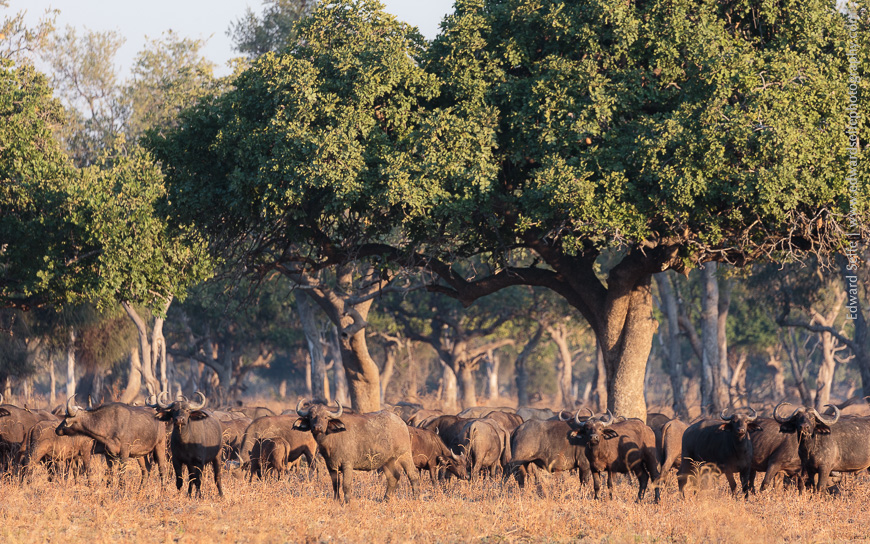
Suspecting that we had enjoyed the best of the light and the morning, we decided to take a less-well-used road into the back-country following a drying river. We had hardly gone 2kms when we spotted a large female leopard moving along a drainage channel! We followed her deliberate movements until she lead us to a puku carcass that she had killed the previous night! With no trees around, she had hidden the antelope under a bush and began feeding again when we arrived. She alternated feeding and covering the carcass with leaves and dirt to disguise the smell of the kill; scavenging hyaenas would quickly steal the left-overs, depriving her of a couple of days’ feeding. Fortunately, at this cool time of year, the carcass will rot only very slowly so she might remain undetected for some time!
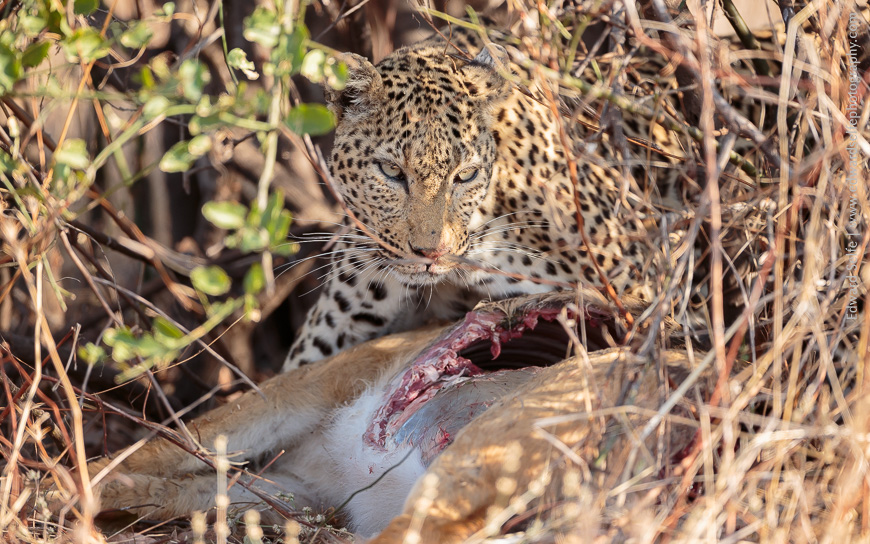
Thrilled with a great final morning, we headed to mwana Lunga lagoon for a tea-break and were met with a herd of elephants coming down to drink. Luangwa had one final treat for us!
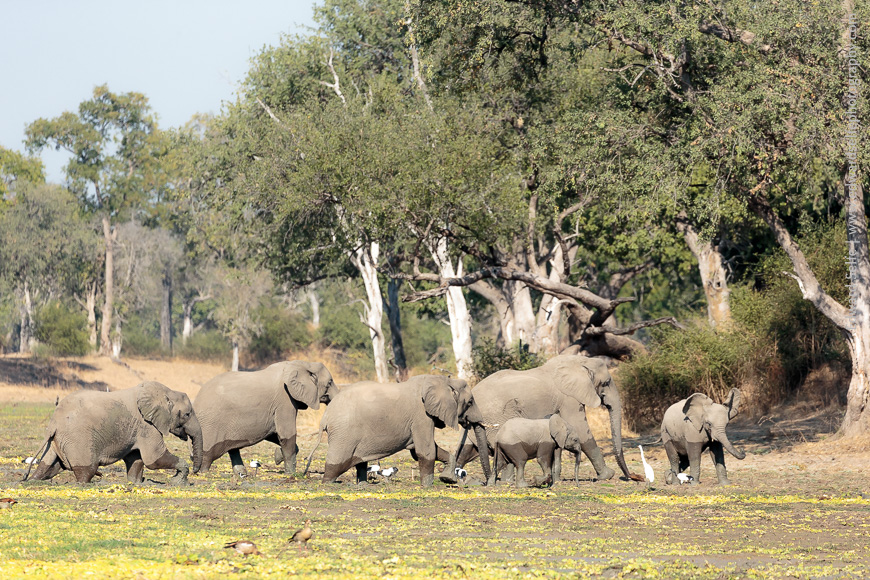

More and more people are learning about the magic of South Luangwa National Park. If you would like to enjoy the wilderness and wildlife of this epic safari destination with a photographer and guide with 10 years’ Luangwa experience, get in touch and I’d love to chat about the options available.
Mike is already planning his 3rd trip for 2018!

